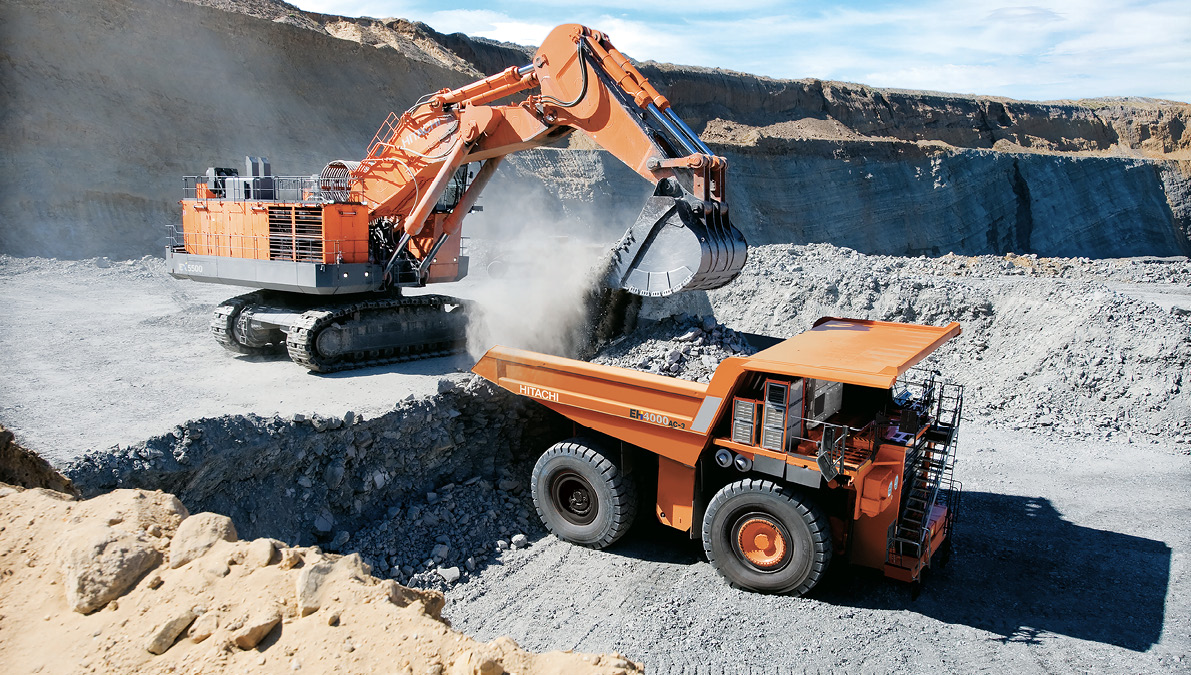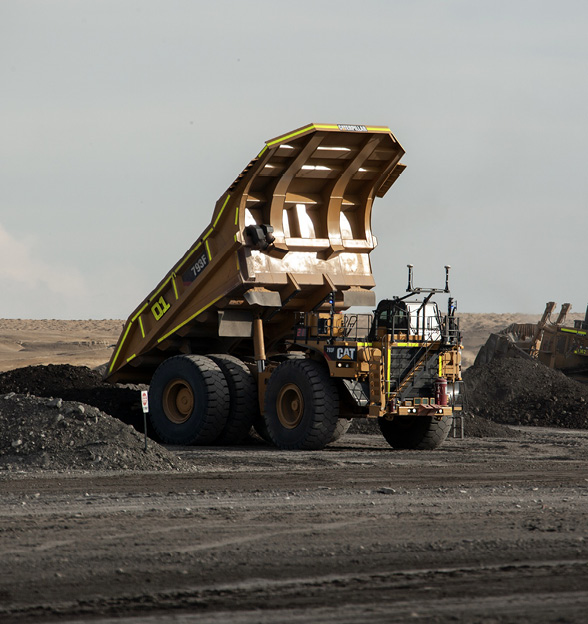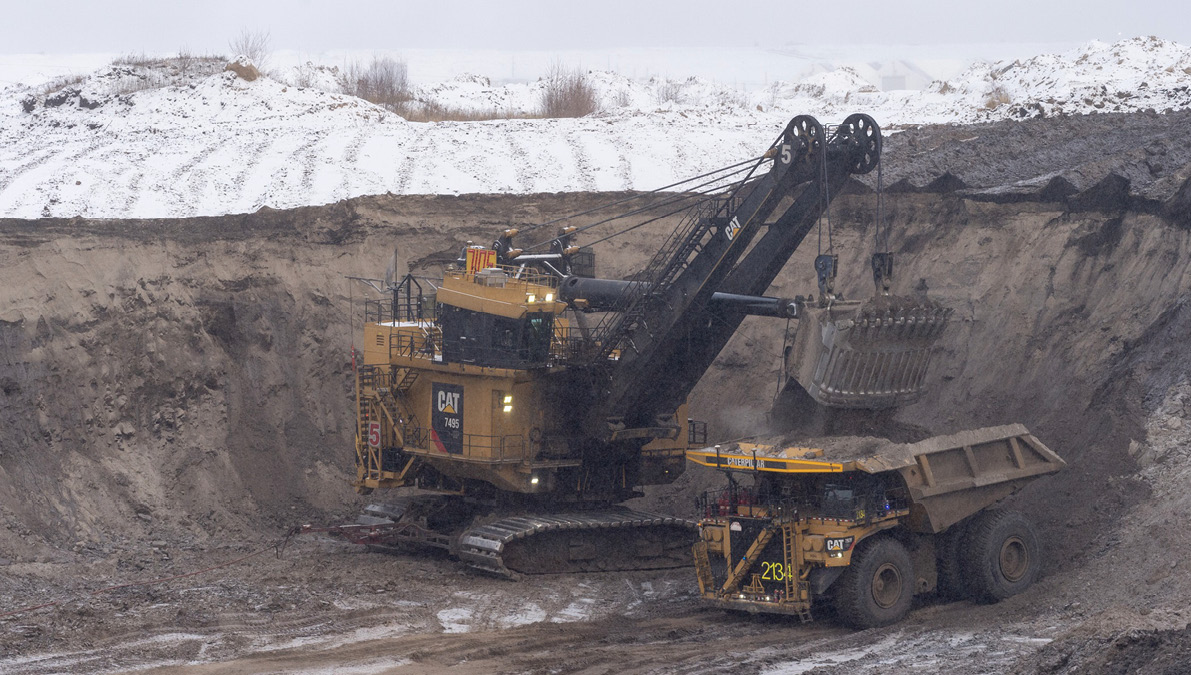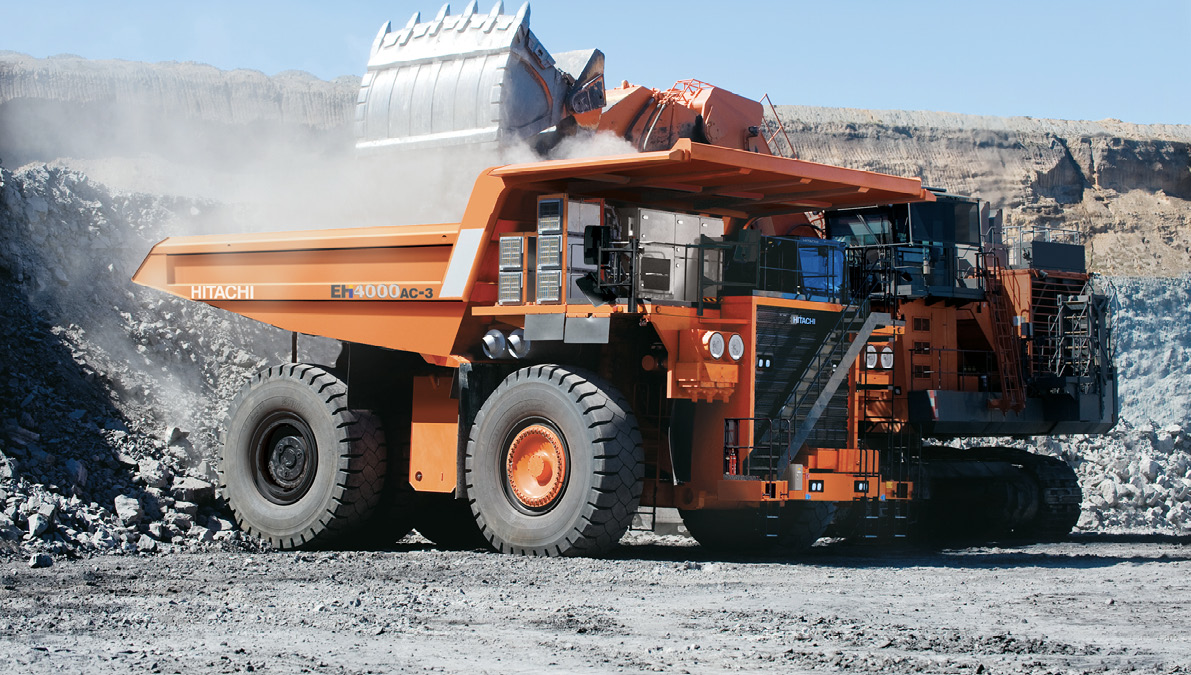North American Mining investigates the world of mine haulage automation, asking where we are and where we are heading next.
By Jonathan Rowland

The mining industry has “increasingly adopted automated haulage solutions as the technology is beginning to be more commercialized,” Masayoshi Ota, vice president of Mining Sales at Hitachi Construction Machinery Americas (HCMA) told North American Mining. “Numerous autonomous fleets have been successfully implemented in large copper, iron ore, and oil sands mines; however, many of these fleets are still in the testing phase.”
As mines operate 24/7, 365 days a year, it is “understood that an autonomous haulage system can improve both productivity and safety,” Ota continued. “This is particularly true where there is increased risk due to the terrain and/or a competitive labor market. In these situations, the automated haulage solution is often a better alternative.”
“Autonomous haulage systems are rapidly gaining traction, due to their potential to enhance consistency, productivity, and safety,” said Sam Wood, head of product management for AI and Autonomous Vehicles, at Navtech Radar. In short: they are helping keep mining companies stay competitive in a market made increasingly challenging by declining ore grades, more complex geology, and growing demand for key metals and minerals – not to mention social and environmental sustainability issues.
There are also “promising signs of wider adoption outside traditional mining hubs, such as Canada and Australia,” continued Wood. “Automation technologies are also expanding beyond large haul trucks to smaller loaders and water trucks, demonstrating a widening scope for adoption and integration. Additionally, the automation of smaller loaders in confined shows growing confidence in these systems.”
As an example of this: Caterpillar’s autonomous truck fleet currently spans the 190- to 370-tonne (210- to 410-ton) class sizes, but it will soon be expanding to the smaller 139-tonne (153-ton) class size as well, the company told NAM.
In 2022, the Irving, Texas-based OEM also announced a collaboration with Luck Stone to deploy Command for hauling at the Bull Run Plant in Chantilly, Va. This is Caterpillar’s first autonomous deployment – technology, processes, and people – in the aggregates industry and will expand the autonomous truck fleet to include the 90-tonne class (100-ton class) Cat 777.
It is not just the size of the equipment that is shrinking; we are starting to see far smaller fleets automated than previously, according to Sean McGinnis, vice president and general manager of Technology and Global Sales Support at Caterpillar Inc.
“It is no longer only for mine sites with fleet sizes of more than 70 trucks, which was initially the case of the technology’s early adopters, when we deployed our first autonomous trucks more than 10 years ago. Today, we are seeing viability for autonomy at smaller mines with a fleet of less than 15 trucks.”

Upcoming challenges
The implementation of autonomous haulage solutions is “not only about the technology,” said McGinnis.
“One of the biggest challenges with autonomy is getting the processes and people ready for autonomous mining. The foundation of Caterpillar’s long track record of success in autonomy stems from bringing the three critical components together: deeply integrated technology, correct processes for the specific mining operation and change management with the people.”
An automated mine is “more like a factory,” McGinnis continued. “While it still has all the variables of a mine site, the mine now knows how to make the processes leaner, how to get more productivity, how to link their processing plant and the autonomous trucks to build a system, like a factory. Having a consistent process is one of the biggest advantages of autonomous haulage.”
Other barriers include deployment costs, complexity, and the speed of workforce upskilling, added Navtech Radar’s Wood, as well as an overreliance on Global Navigation Satellite Systems (GNNS), which Wood described as an “impending challenge.”
“Factors like increased solar activity, proliferation of low-cost jammers, and spoofing equipment pose risks to GNSS reliability,” Wood continued. “Additionally, the cost associated with deploying corrections services – which are required for position accuracy for control across vast mining sites – adds complexity. At the same time, mining environments differ significantly from regular roads, requiring robust sensor systems tailored for feature-sparse, dusty conditions with oversized vehicles. The quality of automation decision-making hinges largely on the accuracy and reliability of sensor data.”
To address these challenges, “ongoing innovation in radar navigation technology presents a promising solution by reducing dependence on GNSS and enhancing perception capabilities in adverse mining conditions,” added Wood.
“Interactions between GNSS and radar-based systems has the potential to create a dynamic scene that is far more reflective of the mining environment scene. Communication between systems would have challenges but obvious benefits and is essential for the safe integration of robotics into mining operations.”
Additionally, “the evolution of intelligent sensors towards adaptive machine learning-driven systems offers exciting opportunities for automation,” concluded Wood.
“By leveraging machine learning advancements, sensors can dynamically learn and adapt, optimizing mining processes and enhancing operational efficiency.”

Let’s talk interoperability
Interoperability is another challenge, as Hitachi’s Ota explained. “Mines have already committed resources to existing trucks and infrastructure at the mine site, most often from a mix of OEMs. This makes interoperability a requirement to maximize their return on investment.”
Addressing this need, several OEMs and mining companies – including HCMA – are involved in the implementation of a new ISO standard (ISO 23725) aimed at progressing autonomous system and fleet management system interoperability.
According to the draft standard, the goal is to “define a reproducible integration of an autonomous haulage system and a fleet management system to avoid customized implementations at every site [allowing] a supplier with a narrow product coverage but highly valuable core mining competencies to participate and deliver open-autonomy components in the overall autonomy technology stack.”
“We are championing open standards, including implementing ISO 23755,” continued Ota. “This standard decouples fleet control from OEM systems and enables customers to use existing haul trucks, fleet management systems, hardware, network, and other infrastructure already in place. The open systems platform provides the necessary fleet management system, spotting, mapping, traffic management, situational awareness, and controls to enable autonomous operation of both traditional ultra-class trucks and smaller electrified trucks.”
As an example: Wenco International Mining Systems, a HCMA group company, provides “open platform fleet management systems necessary for spotting, mapping, traffic management, situational awareness, and control, to enable the autonomous operation of both ultra-class trucks and smaller electrified trucks, regardless of make, and is scalable up to 100 vehicles,” concluded Ota.

Future-proof autonomation?
If the last few years are anything to go by, automation solutions have the potential to advance quickly. How can mining companies ensure the decisions they are making now future proof their mine sites against new developments? Interoperability surely has a role to play here. But so too does communication between mines and technology providers.
“Caterpillar has learned the importance of being heavily engaged on site,” said McGinnis. “We have truck and mining engineers who know how to optimize autonomy and are available to work with customers on site. Onsite personnel give us quick feedback about how the product is performing and what software changes are necessary. We believe having our people on site is critical.”
McGinnis continued: “We deployed our first autonomous trucks at customer mine sites more than 10 years ago. Our engineers keep in close contact with the mining customers and continually upgrade the autonomous haul product. The software looks quite different from the original version developed more than 10 years ago.”
The theme of cooperation between mine and technology supplier was also taken up by Navtech’s Wood. “By developing a collaborative relationship with suppliers, mining companies can leverage technologies that adapt to evolving needs. Key considerations when selecting technology partners include their commitment to innovation, ability to customize solutions, focus on knowledge transfer, and long-term support beyond mere transactions.”
Investment in such strategic partnerships “enables continuous improvement and adaptation to new technological advancements, ultimately enhancing mine site efficiency and safety,” Wood concluded.
“In addition, an ability for end users to respond and adapt quickly to changing needs without being bound to a supplier’s methodology is a powerful way forward within those partnerships.”

Autonomy in the future of mining
Autonomous haulage solutions are also likely to have a key role to play in assisting mining companies to navigate other industry trends, such as electrification. “Due to the complexities of managing a battery-electric haul fleet, we believe systems, such as MineStar Command for hauling, will be essential to optimize the performance and efficiencies during operation,” said Caterpillar’s McGinnis.
Such systems “will likely need to help monitor and orchestrate the complex balance of onboard energy, available charging assets, and production targets to achieve the lowest operating costs,” McGinnis added.
Haulage is also only one component of a fully autonomous operation at mine sites. Mine automation will thus “extend beyond haulage to encompass the entire operation,” said HCMA’s Ota. For example: HCMA is currently developing a “wide range of technologies” to automate ultra-large excavators.
“The sharing of data is a critical piece of the automation puzzle here,” continued Ota.
“In the near future, ultra-large hydraulic excavators and dump trucks will exchange information with other equipment and machinery to realize autonomous operation and improve safety and productivity at mining sites, while ushering in the digital mine site future. The ultimate challenge is to harness Level 5 autonomy. This will allow customers to capture the full potential return on investment through reduced need for human intervention.”
“Mine site automation will play a critical role in the future of surface mining, but it is already making significant impacts, and not just with autonomous haulage,” concluded McGinnis. “Autonomous machines are hard at work around the globe every day: autonomous drilling, loading, dozing and hauling with the autonomous sites of tomorrow already underway.”
